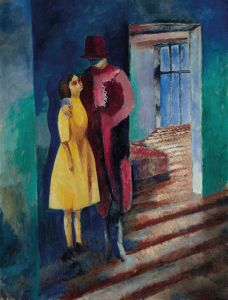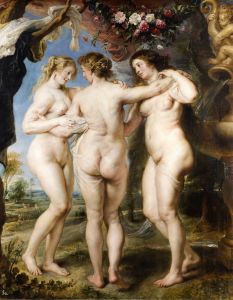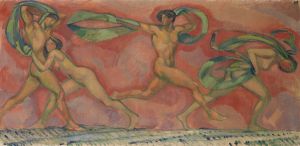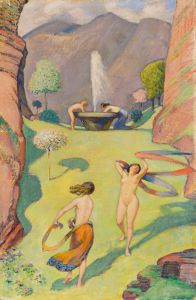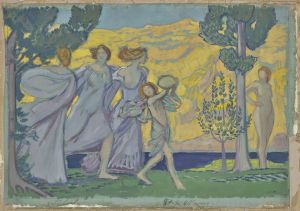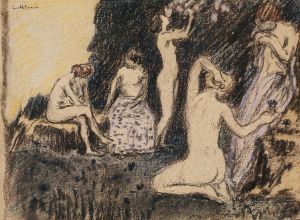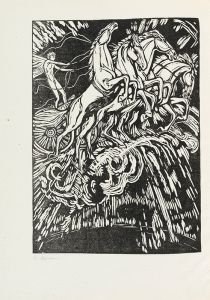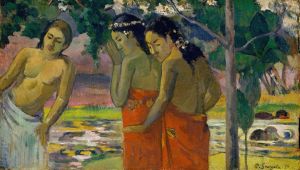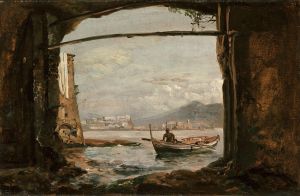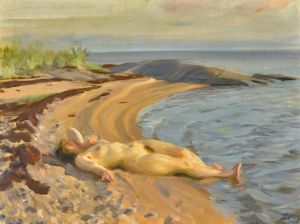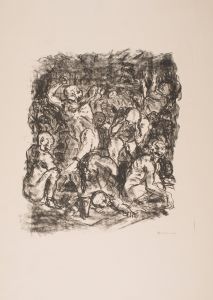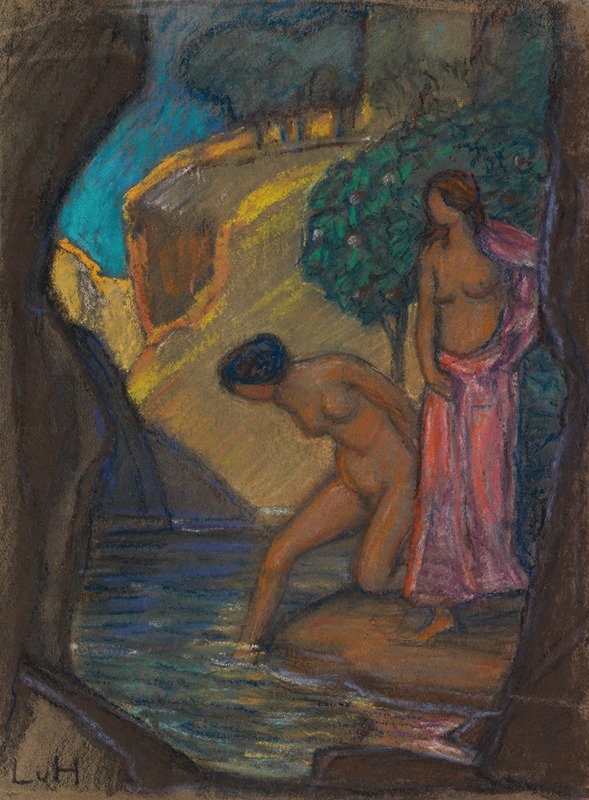
Grotte mit badenden Frauen
A hand-painted replica of Ludwig von Hofmann’s masterpiece Grotte mit badenden Frauen, meticulously crafted by professional artists to capture the true essence of the original. Each piece is created with museum-quality canvas and rare mineral pigments, carefully painted by experienced artists with delicate brushstrokes and rich, layered colors to perfectly recreate the texture of the original artwork. Unlike machine-printed reproductions, this hand-painted version brings the painting to life, infused with the artist’s emotions and skill in every stroke. Whether for personal collection or home decoration, it instantly elevates the artistic atmosphere of any space.
Ludwig von Hofmann (1861–1945) was a German painter and graphic artist associated with the Art Nouveau and Symbolist movements. His works often depicted idyllic, dreamlike scenes featuring figures in harmony with nature. One of his notable works is Grotte mit badenden Frauen (Cave with Bathing Women), which exemplifies his characteristic style of combining mythological themes with a focus on the human form and natural surroundings.
Grotte mit badenden Frauen portrays a group of women bathing in a serene, grotto-like setting. The composition reflects Hofmann's interest in classical antiquity and his fascination with the human body as a subject of beauty and grace. The figures are depicted in a relaxed and harmonious manner, emphasizing their connection to the surrounding natural environment. The use of light and shadow within the grotto creates a tranquil and almost otherworldly atmosphere, a hallmark of Hofmann's ability to evoke a sense of timelessness in his work.
Hofmann was influenced by various artistic movements of his time, including Symbolism, which sought to convey deeper meanings and emotions through art, and Art Nouveau, characterized by its flowing lines and organic forms. These influences are evident in Grotte mit badenden Frauen, where the interplay of the figures and their environment suggests a symbolic unity between humanity and nature.
The painting is also indicative of Hofmann's broader body of work, which often explored themes of leisure, beauty, and the idyllic. His art was well-regarded during his lifetime, and he held teaching positions at prestigious institutions, including the Weimar Saxon-Grand Ducal Art School and later the Dresden Academy of Fine Arts. Hofmann's works, including Grotte mit badenden Frauen, contributed to the cultural and artistic landscape of early 20th-century Germany.
Today, Ludwig von Hofmann's paintings are appreciated for their aesthetic qualities and their ability to capture a sense of harmony and idealism. While specific details about the provenance or current location of Grotte mit badenden Frauen are not widely documented, the painting remains an important example of Hofmann's artistic vision and his contribution to the Symbolist and Art Nouveau movements.





